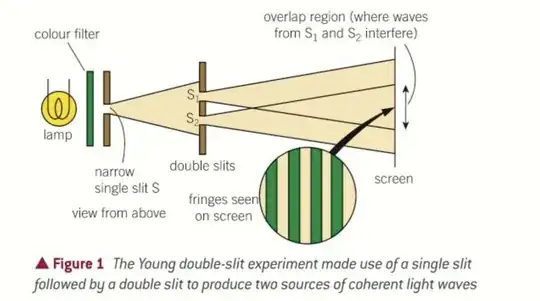I am studying waves these days and my teacher just introduced Young double-slit experiment, which has always been brilliant (see picture below).
However, I have a question: why is there a single slit in the experiment?
My teacher says that the single slit is used to make sure the light at both of the double-slit are coherent (i.e. they have same frequency).
But what I think is that, since the light source is monochromatic (i.e. the light has only one frequency), theoretically, any two light rays from this source must be coherent. So it's very unnecessary to use the single slit. I believe there must be some other reason for this single slit.
